A Timeline, 1977 through 1988
This is a graphical representation of the major milestones in the digital SEIKO World Time watch series releases.
Digital SEIKO World Time, Major Milestones
-
1977
The PAN AM
The Digital Revolution, An Icon is Born
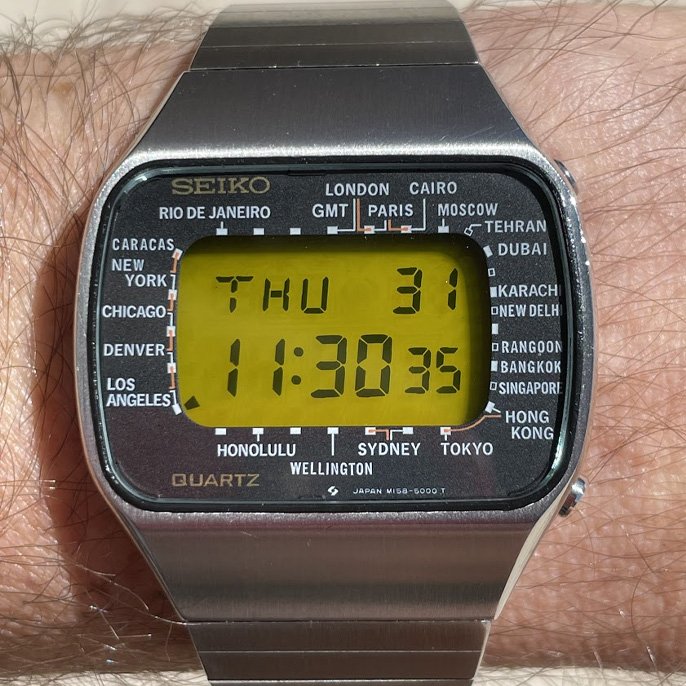
Model No: M158-500X
By the late 1970's quartz watches had become the new standard, a future SEIKO embraced early and completely. In 1977 SEIKO replaced the then aging and outdated mechanical World Times with the all new M158-500X. Referred to as the "PAN AM", this watch became synonymous with airline pilots of the day. It was one of the first digital watches to include a world time complication, and certainly the most sophisticated.
CLICK HERE to learn more about this watch »
Produced from 1977 through 1979
-
April 1979
The Alarm
The second series of Digital World Times
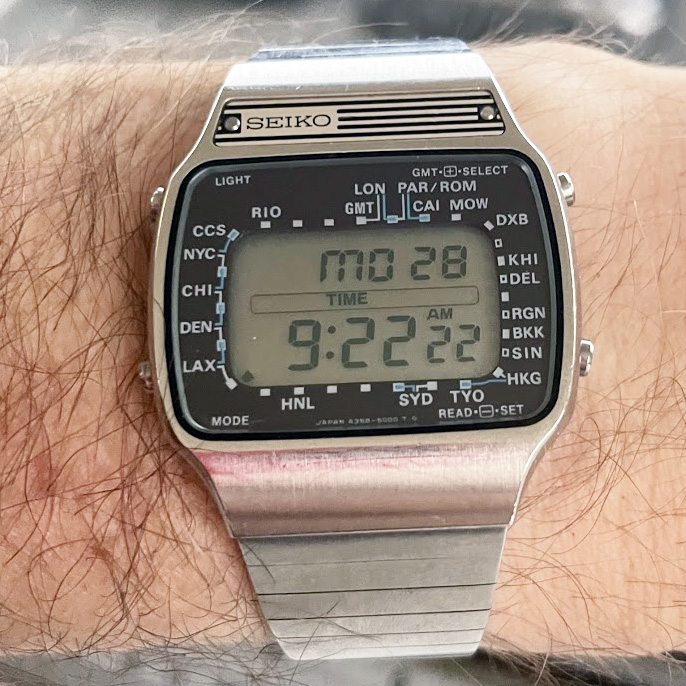
Model No: A358-500X
The new A358 replaces the iconic M158 in 1979 with an updated model sporting several additional features. As the A in the model number suggests, this World Time included an Alarm. Two alarms infact. One that could be set based on Home time and another that could set based on World time. It also included a Time Signal complication - essentially a chime that could be set to ring every hour, on the hour.
CLICK HERE to learn more about this watch »
Produced April 1979 - 1980
-
July 1979
The Atlas
The third series of Digital World Times
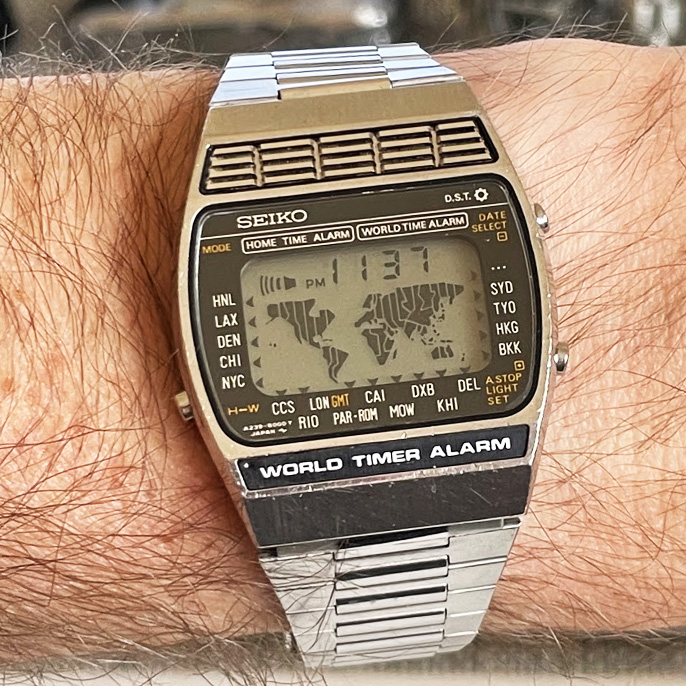
Model No: A239-50XX
The A239 was released around the same time as the A358 models. This watch had no direct predecessor or successor. Unique to this series was a first of its kind (for a world timer) dual LCD setup. With the click of a button, the user could toggle between a standard time and date screen and a world time map screen.
CLICK HERE to learn more about this watch »
Produced April 1979 - 1980
-
Early 1984
The "TWA"
The fourth series of Digital World Times
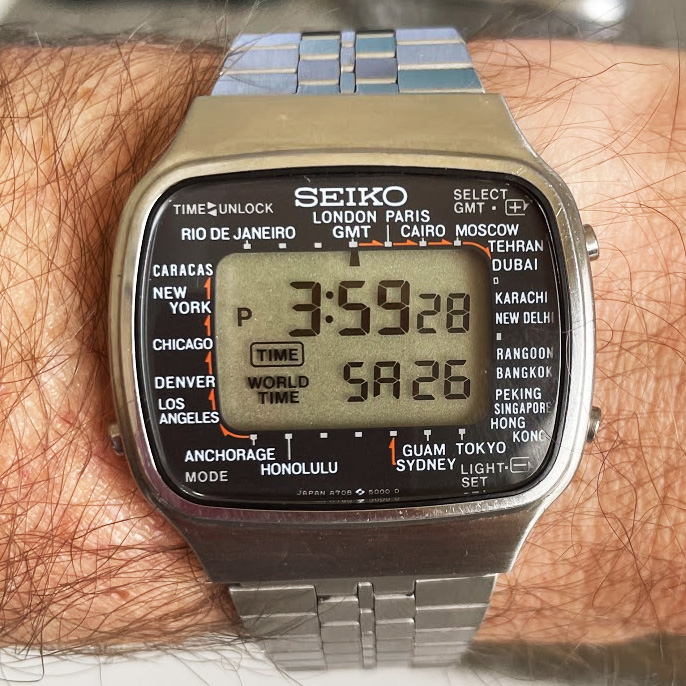
Model No: A708-50XX
The A708 "TWA" was the aesthetic successor to the M158 "PAN AM", sporting the same overall case shape and dimensions, this time with a vintage-inspired curved crystal, and four button layout. The A708 module that powers this watch is nearly identical to the A718 models, but lacking an alarm complication. Despite the common electronic components, the A708 looks nothing like the A718 models otherwise.
CLICK HERE to learn more about this watch »
Produced April 1984 - 1988
-
Early 1984
The Frankenstein
The fifth series of Digital World Times
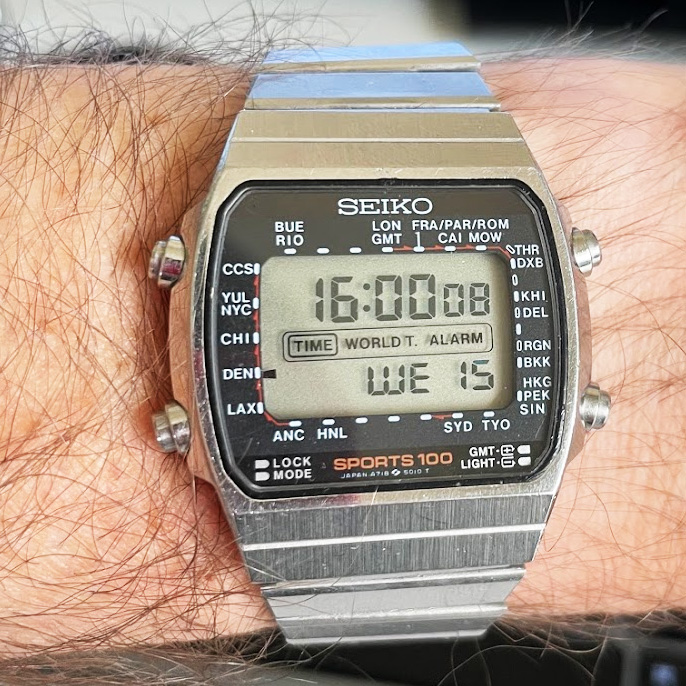
Model No: A718-5010
A rare watch to find today, the A718-5010 "Frankenstein" was the first watch in this generation of world timers to add Frankfurt to the list of reference cities. It also included prominent pushers, reminiscent of the pegs in Frankenstein's monster's head and neck, and a unique case design. Known examples include dial frame variants in black and gray.
Marked SPORTS 100, this watch was likely marketed as a sports watch with a world time complication, rather than a world time watch.CLICK HERE to learn more about this watch »
Produced April 1984 - 1988
-
Early 1984
The John Cleese
The sixth series of Digital World Times
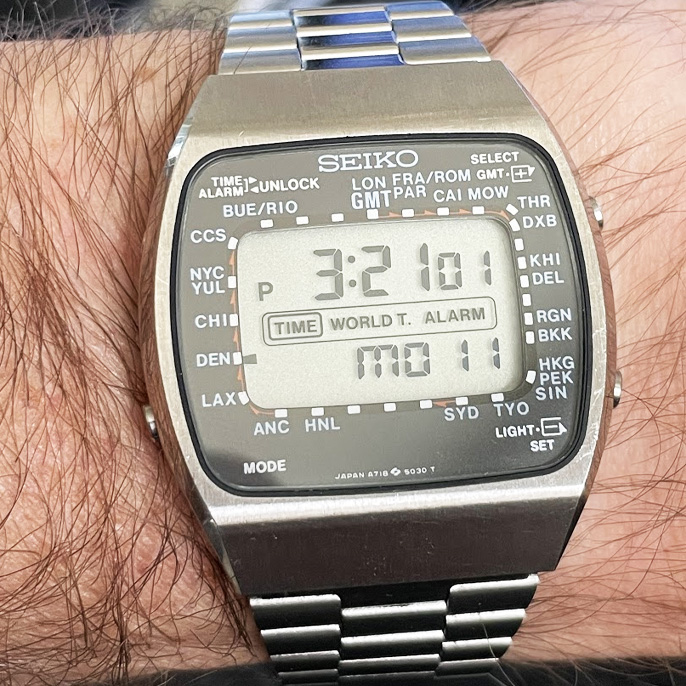
Model No: A718-5030
The A718-5030 model is sometimes referred to as the "John Cleese", as it was worn by the actor in the 1986 film Clockwise. The A718 appears to have been a premium version of the A708, including an alarm complication with updated liquid crystal display.
CLICK HERE to learn more about this watch »
Produced April 1984 - ???
-
1989
The Next Generation - 5T52
Quartz Analog and the Age of Discovery
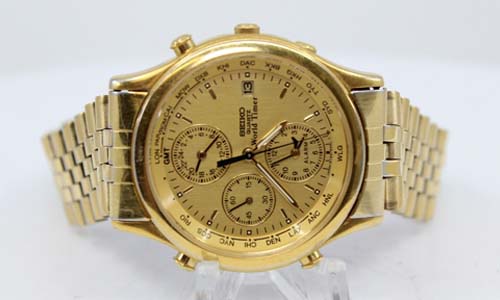
Model No: 5T52-6AXX
In 1989 SEIKO sunset their digital line of World Timers, replacing them with a new line of Quartz Analog watches. Early examples were based on the new 5T52 movement. Around 1990 this series became part of The Age of Discovery line, celebrating 500 years since Columbus discovered the New World.
COMING SOON: Learn more about this watch
Produced 1989 - 1992